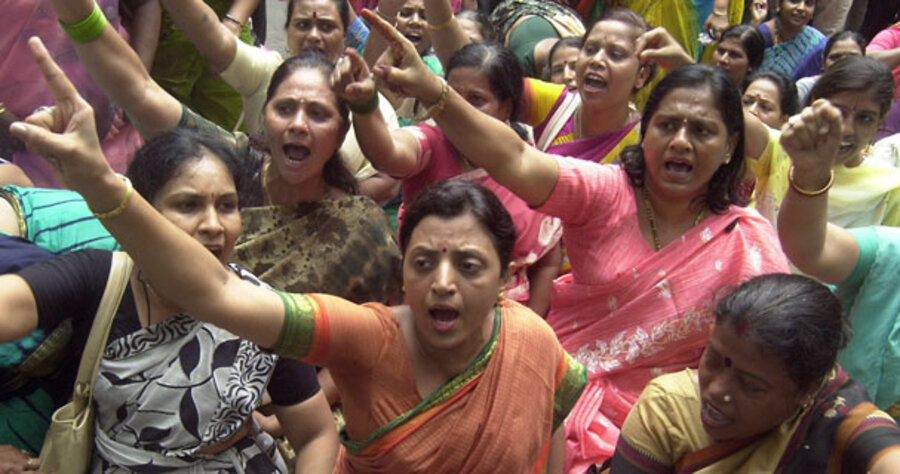World Bank backs massive India coal plant, calls it "clean development"
Loading...
The World Bank Group has come under fire from environmentalists for approving financing for a 4-billion-watt coal-fired power plant in Mundra, Gujarat, India, which will be funded in part by money intended to reduce carbon emissions.
On Tuesday, the board of the World Bank Group's International Finance Corporation approved $450 million in loans over 20 years for the hyperbolically named Tata Ultra Mega, a $4.14 billion power plant expected to go online in mid-2011. The plant, run by Tata, India's largest corporation, will provide electricity for five states in the north and west.
According to a press release from the IFC, the plant will be India's cleanest and most efficient:
While the plant will emit 23 million tons of CO2, its use of supercritical technology will make it India’s most efficient coal-fired plant. The intensity of the plant’s carbon emissions is expected to be 40 percent less than the average of existing coal-fired plants in India and 16 percent less than the average of coal plants in OECD countries. Its competitive tariff will also improve access to energy for many low-income people in the country.
How much is 23 million tons of CO2? According to this handy website produced by the Center for Global Development, if it were running today, the Mega Ultra would be, in absolute terms, the second highest CO2 emitting power plant in India and the 23rd highest in the world.
Despite these figures, the plant's relative per-capita efficiency qualifies as a Clean Development Mechanism under the Kyoto Protocol, which means that industrialized countries can invest in it as a low-cost alternative to reducing carbon emissions in their own country.
This has some environmentalists outraged. In a scathing commentary in Foreign Policy In Focus Daphne Wysham and Shakuntala Makhijani condemn what they call "climate profiteering" by the World Bank, Tata, and industrialized countries:
The World Bank has seized upon the immense challenges climate change poses to humanity and is now front and center in the complicated, international world of carbon finance. It can turn the dirtiest carbon credits into gold.
How exactly, does this work, you ask?
Quite simply: The Bank finances a fossil fuel project, involving oil, natural gas, or coal, in Poor Country A. Rich Country B asks the Bank to help arrange carbon credits so Country B can tell its carbon counters it’s taking serious action on climate change. The World Bank kindly obliges, offering carbon credits for a price far lower than Country B would have to pay if Country B made those cuts at home. Country A gets a share of the cash to invest in equipment to make fossil fuel project slightly more efficient, the World Bank takes its 13% cut, and everyone is happy.
Everyone, that is, who is cashing in on this deal. If you’re after a real solution to the climate crisis, these shenanigans can and should make you unhappy.
But despite the dubious environmental benefits of the Mega Ultra, the fact remains that India desperately needs reliable power. It's very easy for someone like me, sitting in a well-lit Boston office (okay, cubicle), to gloss over what it's like to live with sporadic power. According to the Mega Ultra's project description, the states that the plant would serve currently face energy shortages ranging from 7 percent to 19 percent and peak power shortages ranging from 10 percent to 30 percent. And more than half of India's rural households have no electricity. If India is ever going to lift its population out of poverty, it needs electricity.
But there could be a better option. An analysis by David Wheeler, a former World Bank economist, shows that the Mundra region is a great candidate for thermal solar power because it's sparsely settled and gets a lot of sun. The cost of solar power, he says, would cost 8.23 cents per kilowatt-hour, versus 7.65 cents for Mega Ultra's coal. He shows that the remaining cost gap could be completely covered by financing from international clean technology funds, that is, true carbon offsets. If Mundra went solar, Wheeler argues, the project would improve the World Bank's image and help advance technology in renewable energy. Not to mention keeping Gujarat's skies free of mercury and toxic particulates.
But the check has already been signed for the Ultra Mega, so it would take tremendous public pressure to keep it from going online. Given India' acute need for electricity, those opposing the plant will need to work hard to reframe the debate away from one the environment versus prosperity.





